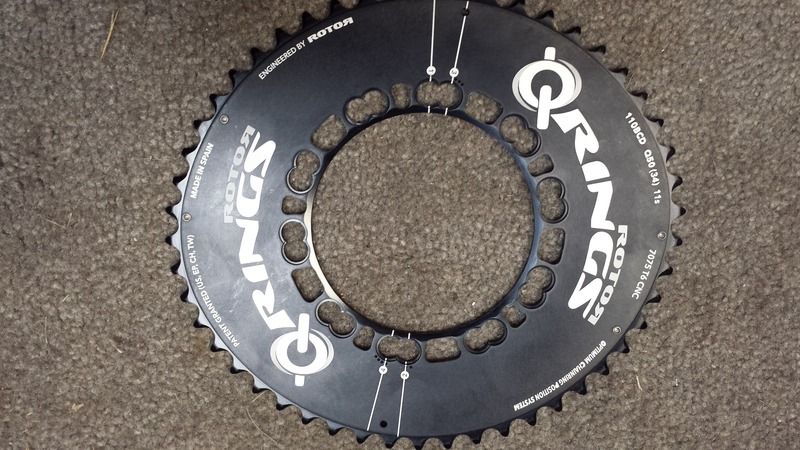Lief
Guru Schmuru
That's a bunch easier
John,
it's funny - I could have read that last week and I'm not sure it would have helped - but now, having done it, it makes PERFECT sense.
Not sure why I was so scared of the QRing thing - anything that feels like magic does that to a person I guess.
Maybe I'm more susceptible than most.
Ratz,
I was able to loosen the bolt just fine when I took it apart.
getting it back together again was the PITA. I ended up wedging (loosely) a small allen wrench between the crank and the chainring bolt just to hold it in place enough to get the inside bolt seated and torqued enough.
Again - having done it now, I can totally see what you are talking about RE: the short hex bit and pliers on the inside.
I was sure wishing that the crank and the "OCP" spider arm were in opposition that night.
I greased the screw(s).
I torqued them fairly close (I think). I've over-torqued things my whole life (to the point of failure) - I have an entire section on my blog called "Things I Have Broken".
Since I didn't have the right torque wrench setup, and being sensitive to my propensity for overtorquing, I undertook this very scientific method:
* I looked at the spec for the torque
* Practiced on my existing torque wrench for the proper feel of spec
* Grabbed an allen wrench that wasn't the same length as my torque wrench
* And tightened those bolts until they were right up to the place where I'd typically put in that extra, just for good measure, 1/4 turn, beyond what I just felt on the different length torque wrench.
* And I stopped before doing that last 1/4 turn.
* Put the wrench down and backed slowly away.
all that is to say - it's time to invest (some more) in some proper tools.
Lief
John,
it's funny - I could have read that last week and I'm not sure it would have helped - but now, having done it, it makes PERFECT sense.
Not sure why I was so scared of the QRing thing - anything that feels like magic does that to a person I guess.
Maybe I'm more susceptible than most.
Ratz,
I was able to loosen the bolt just fine when I took it apart.
getting it back together again was the PITA. I ended up wedging (loosely) a small allen wrench between the crank and the chainring bolt just to hold it in place enough to get the inside bolt seated and torqued enough.
Again - having done it now, I can totally see what you are talking about RE: the short hex bit and pliers on the inside.
I was sure wishing that the crank and the "OCP" spider arm were in opposition that night.
I greased the screw(s).
I torqued them fairly close (I think). I've over-torqued things my whole life (to the point of failure) - I have an entire section on my blog called "Things I Have Broken".
Since I didn't have the right torque wrench setup, and being sensitive to my propensity for overtorquing, I undertook this very scientific method:
* I looked at the spec for the torque
* Practiced on my existing torque wrench for the proper feel of spec
* Grabbed an allen wrench that wasn't the same length as my torque wrench
* And tightened those bolts until they were right up to the place where I'd typically put in that extra, just for good measure, 1/4 turn, beyond what I just felt on the different length torque wrench.
* And I stopped before doing that last 1/4 turn.
* Put the wrench down and backed slowly away.
all that is to say - it's time to invest (some more) in some proper tools.
Lief

.jpg)



